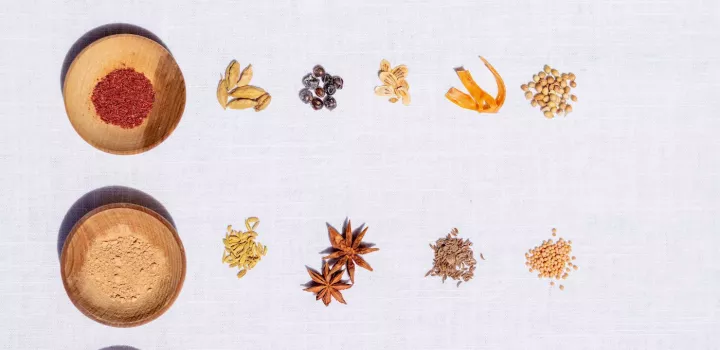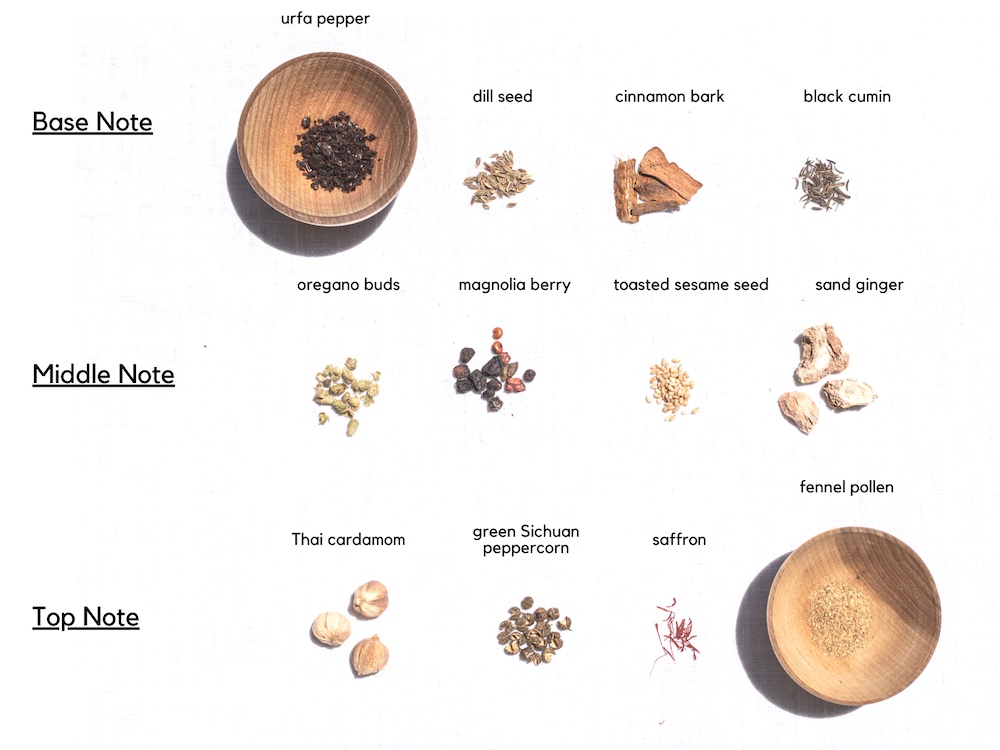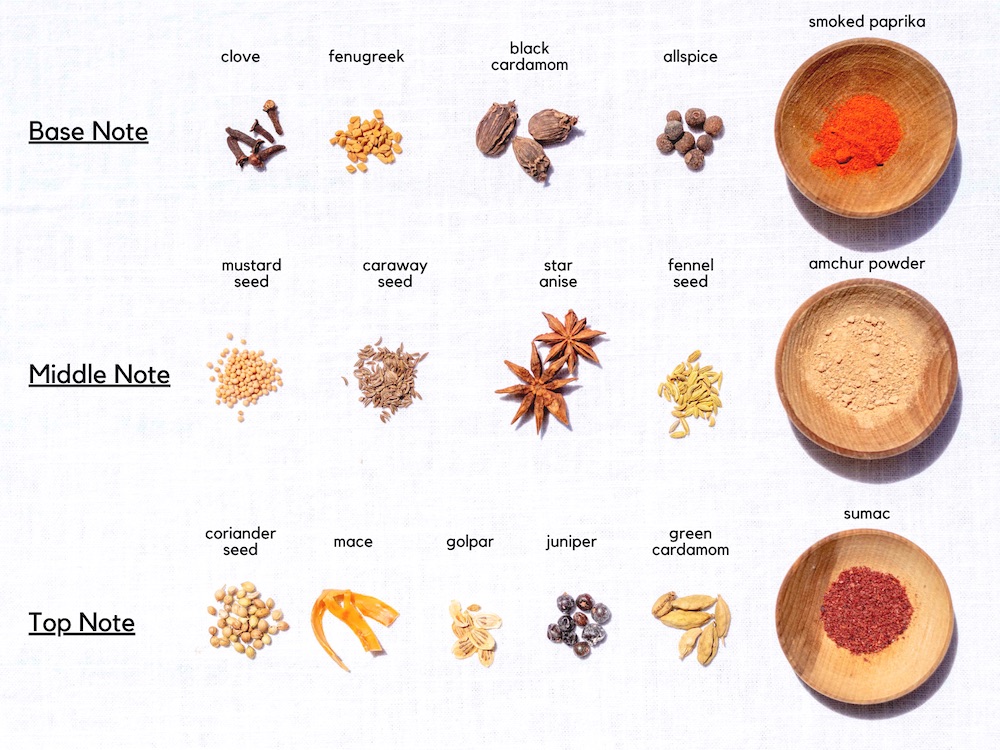
A Sound Way to Organize Your Spices
ICE alum Jenny Dorsey (Culinary, '12) describes her method for developing spice blends.
There are hundreds upon hundreds of spices in the world, which can make them feel daunting to categorize effectively in your kitchen. Understanding how and where they fit in relationship with one another can be difficult: How do you describe cinnamon in relationship to, say, mustard seed? How do you know what sort of spices to pair together? In what ratios? For what applications?
My method for the last few years has been through notes (hence the punny title of this post, heh heh). Specifically, tasting them and mentally shuffling spices into top, middle or base notes. Much like the notes of a song, I think of spice notes as something that layers together to make the whole more than the sum of its parts.
Top notes are the aromas and flavors that will hit your nostrils and tastebuds first — they are typically very bright, juicy, occasionally tart — and stay at the top of your senses while eating the entire dish. They balance out hefty meats, like braised lamb, and also complement heartier root vegetables. I find top notes are often underutilized for their ability to contrast rich and fatty flavors and textures. In addition to utilizing vinegars and citrus, consider spices like sumac, coriander seed and pink peppercorn. These can be just as zingy while adding flavor to a spice rub or marinade.
Middle notes are those that contain a hint of brightness but mellow out to something slightly more neutral and warm. Because they provide structure and balance to the dish, almost every dish contains at least one spice in this category (often in the form of black pepper), if not several. Middle notes shine especially well when accented with top and base notes, which can come either in spice form or a different type of ingredient (e.g. ginger or chocolate).
Base notes are often the flavor that lingers in your mouth as you finish a dish. They smell and taste warm, toasty, hefty, sometimes smoky and sit heavier on the tongue. They build up the foundation of the dish, round out the flavor of the main ingredient and prop up the top and middle notes. While the American palate seems to enjoy piling a lot of base notes together (see: pumpkin spice mix), I personally think it’s very important to pair base notes with lighter accents to avoid a dish tasting “damp,” thick or cloying.

My favorite part of using this system of notes for spices is how accessible it is for then confidently making spice blends. If you’re still getting familiar with combining spices, I recommend trying out two ratios as a starting point. A 1:1:1 ratio of top, middle and base spices will be nicely balanced and versatile for most applications while a 3:2:1 or 1:2:3 ratio allows you to pronounce top or base notes for a specific dish. Once you’ve made some blends and understand how to suit your own fancy, experiment with different ratios depending on what you like! You can also use these ratios to even out your spice collection the next time you go shopping: Just take stock of what category your current spices are clustered in and try to add spices of different notes to complement them.
I encourage buying spices whole when possible and grinding in small quantities for spice mixes because pre-ground spices will go stale much faster. All spices (ground and whole) lose potency over time and do expire, so make sure to refresh your spices roughly once a year if you don’t use them frequently.

To get started on this system of categorizing spices, please refer to these two charts. They are not exhaustive but will provide you a good set of all notes so you can begin to mentally chart spices for yourself. Remember that this is absolutely a subjective exercise, and you may also move spices into categories that are different from mine. That’s okay, and in fact, great – go forth, customize and maximize everything from your spices!
Explore cooking with spices in Culinary Arts.


Fun and informative post!
Submitted by Clara Park on June 12, 2020 10:19am
Hi Chef Jenny,
Great post! Lots of good nuggets of information and observations. Simple and elegant way of breaking down the how-tos of spice blending. I'll tell you what I want, what I really, really want...more spices everywhere! Hope you're well! -cp
Add new comment